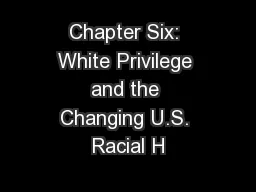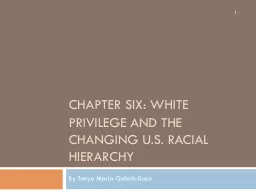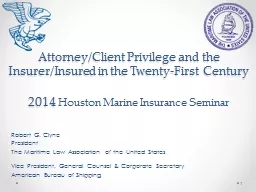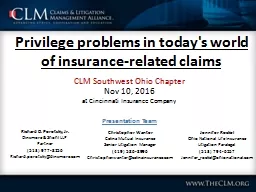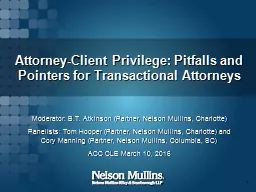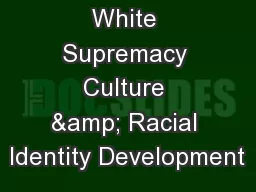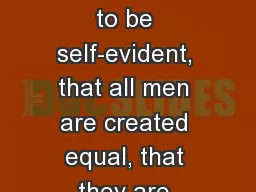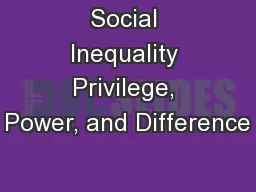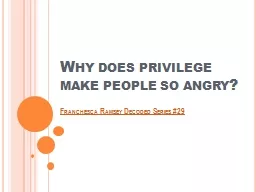PPT-Chapter Six: White Privilege and the Changing U.S. Racial H
Author : sherrill-nordquist | Published Date : 2017-07-05
By Tanya Maria GolashBoza White Privilege It is important to think about white privilege for several reasons First of all if we want to understand racial oppression
Presentation Embed Code
Download Presentation
Download Presentation The PPT/PDF document "Chapter Six: White Privilege and the Cha..." is the property of its rightful owner. Permission is granted to download and print the materials on this website for personal, non-commercial use only, and to display it on your personal computer provided you do not modify the materials and that you retain all copyright notices contained in the materials. By downloading content from our website, you accept the terms of this agreement.
Chapter Six: White Privilege and the Changing U.S. Racial H: Transcript
Download Rules Of Document
"Chapter Six: White Privilege and the Changing U.S. Racial H"The content belongs to its owner. You may download and print it for personal use, without modification, and keep all copyright notices. By downloading, you agree to these terms.
Related Documents

